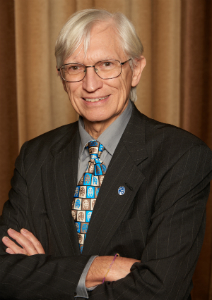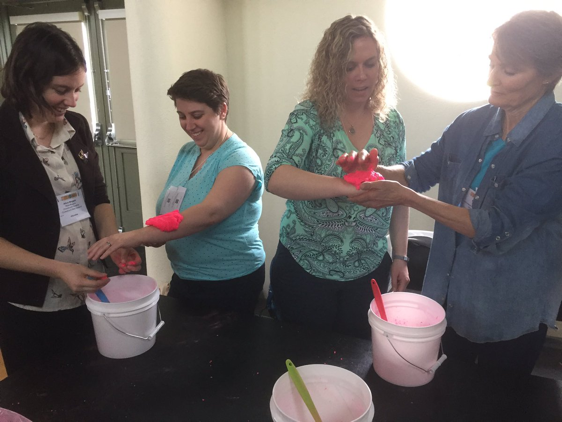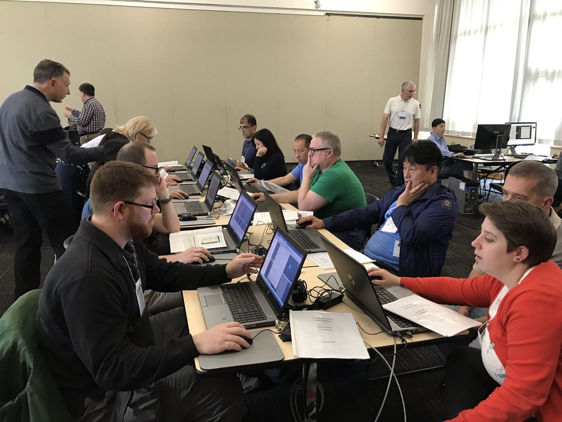


We are happy to report on the success of the 2017 AAPM Summer School. The school was held in Portland, Oregon at the verdant Lewis & Clark College June 10–14. This year, the focus was Clinical Brachytherapy Physics and the school was held in conjunction with the American Brachytherapy Society (ABS). Attendance was strong at >250 registrants in total from 15 countries (albeit 85% were from the United States). The experience of participants was on average 11 ± 9 years (min=0, max=47). Registration for the school was closed early to retain the intimate environment for the workshops with two faculty members per ~25 participants.
The first two AAPM Summer Schools on brachytherapy physics occurred in 1994 and 2005. While their focus was on all brachytherapy, the current Summer School focused mostly on clinically relevant materials. This approach was thought to best serve the brachytherapy community due to the maturity of many brachytherapy-related technologies and an identified need for consistent and high-quality treatment delivery. The 2017 course provided an intense experience to cover state-of-the-art clinical brachytherapy physics. Presentations included the know-how from experts as well as discussions and dialogue with course attendees. The 20 hours of morning sessions delivered concise summaries (in 10-minute presentation slots) of the materials included in the Summer School textbook. Medical Physics Continuing Education Credits (MPCEC) and Self Assessment Modules (SAM), accredited by the American Board of Radiology, were provided for the morning lectures as well as the afternoon workshops.
In the dozen years since the last Summer School on brachytherapy, training and education have been identified as key to continue the utilization of clinical brachytherapy. Therefore, the 2017 Summer School included nine workshops to provide practical hands-on opportunities for attendees to gain experience on key aspects of clinical brachytherapy physics, with opportunities for feedback from the faculty members. To our knowledge, these workshops encompassed the largest training opportunity in clinical brachytherapy physics outside of an accredited training program. The nine workshops covered the following topics: HDR unit commissioning and QA, TRUS QA, mold construction, commissioning MBDCA-based TPSs, APBI treatment planning, LDR prostate brachytherapy (real-time, adaptive planning), HDR prostate brachytherapy, and MRI-based cervix planning. These workshops provided practical hands-on opportunities for attendees to gain experience on clinical brachytherapy physics with opportunities for feedback from the faculty. Without patient treatments and radioactive sources, this Summer School on clinical brachytherapy physics offered a close substitute to the hands-on experience gained in a clinic.
The afternoon workshops could not have occurred without the support from our vendor partners, who provided brachytherapy equipment and training materials exceeding their regular offerings such as at the ABS, AAPM, and ASTRO conferences. We extend our appreciation to the following vendors (listed alphabetically) for their support: Best Medical, CIRS (Computerized Imaging Reference Systems), CivaTech Oncology, Elekta, Gammex/Sun Nuclear, IsoAid, IsoRay, RPD (Radiation Products Design), Standard Imaging, Theragenics, Varian, and Yezitronix. Their contributions and the private campus environment made the workshop trainings both pertinent and productive as well as providing memorable experiences for the faculty and school participants.
 Group photo of most of the +250 participants at the AAPM Summer School on Clinical Brachytherapy Physics at Lewis & Clark College in Portland, OR.
Group photo of most of the +250 participants at the AAPM Summer School on Clinical Brachytherapy Physics at Lewis & Clark College in Portland, OR.
As with all 5-day AAPM Summer Schools, the afternoon of the fourth day was free. There were opportunities to explore the scenic campus and 13 miles of nature trails adjacent to the Lewis & Clark College campus, try kayaking along the Willamette River, or venture to downtown Portland by bus to visit the Pearl District with Powell's Books and coffee shops. Being held in June in the Pacific Northwest, we were fortunate that only the persistent drizzle would brighten the sidewalks. After the first full day, a rainbow shined down upon us brightly to signal a prosperous start for the course. Coffee (covfefe!) breaks were welcome pauses during the morning and afternoon sessions to interact with school colleagues, ask specific questions of the faculty, and address any unmet inquiries around the vendor provided equipment.
The course textbook captures the 2017 AAPM Summer School, which provided an intense experience to cover state-of-the-art clinical brachytherapy physics. It has become expected that low-dose-rate (LDR) prostate brachytherapy for early-stage disease can provide 10-year survival rates exceeding 95% with minimal morbidities. The convenience of this approach, yet with dwell-time modulation and no residual seed placement is becoming widespread for high-dose-rate (HDR) prostate brachytherapy. Computerized treatment planning for brachytherapy has largely replaced nomograms and other methods that estimate treatment metrics without employing 3D patient-specific imaging. Several methods for dose optimization and treatment plan evaluation are now standard-of-care. For brachytherapy using HDR 192Ir sources, advances in the past dozen years have included model-based dose calculation algorithms that evaluate dose while accounting for radiation scatter conditions during treatment and material properties such as of the patient and brachytherapy applicators. Breast brachytherapy has seen the widespread use of balloon-based brachytherapy applicators in North America and the popularization of catheter-based treatments for accelerated partial breast irradiation (APBI). Treatment of gynecological malignancies has progressed in the past several decades, and 3D image-guided planning is now the standard with greater utilization of MRI. Skin brachytherapy now has many choices for treatment delivery such as interstitial implantation, surface molds, or collimated applicators. Electronic brachytherapy has been integrated into many of the aforementioned anatomic sites with special applicators that draw on attributes of the high dose-rate of treatment yet the low energy of their photon emissions. Further efforts to move beyond the AAPM Task Group-43 model dose calculation formalism are intrinsic to intensity-modulated brachytherapy, which contain sources or applicators with collimation or shielding. Brachytherapy now includes emerging technologies such as focal therapy, 3D printing (additive manufacturing), new in-vivo dosimetry techniques, live needle tracking and robotics. This textbook discusses all those topics in great detail. Registered attendees received the course textbook, which captures the contents of the presentations and workshops, provides example forms and workflows, and includes over 100 practical problems and explanative solutions to aid the reader in autodidactic learning based on the 10 chapters. The book is currently available through Medical Physics Publishing.
All this could not have occurred without the deep contributions from Karen MacFarland of AAPM HQ. For nearly one year she committed to make the school a success through marketing, coordinating, and planning. Her candor and positive spirit helped drive forward the volunteer effort. Other AAPM HQ staff instrumental to the school's success included Jackie Ogburn, Rachel Smiroldo, Corbi Foster, Jaime Hoza, Phyllis Doak, and Laurie Allen. We also express our gratitude to Holly Lincoln, Chair of the AAPM Summer School Subcommittee, for assisting with the budget, building upon knowledge gained from prior schools, and jumping in as a guest faculty for one of the workshop sessions.
The post-school survey indicated that participants were strongly in favor of the school format (morning lectures and afternoon workshops) where 87% scored it as a 4 or 5 (out of 5). As echoed by all the school participants and the vendors, we will scheme to offer such educational and training opportunities from this Summer School more frequently than every dozen years, possibly including physicians and partnering with the ABS.
 Workshop #4 on how to make and prepare custom molds and flaps for skin brachytherapy. The participants learned interstitial methods, positioning techniques, and essential aspects to ensure safe and accurate brachytherapy delivery.
Workshop #4 on how to make and prepare custom molds and flaps for skin brachytherapy. The participants learned interstitial methods, positioning techniques, and essential aspects to ensure safe and accurate brachytherapy delivery.
 Workshop #5 on commissioning for treatment planning systems using model-based dose calculations for brachytherapy dosimetry using the Registry test cases.
Workshop #5 on commissioning for treatment planning systems using model-based dose calculations for brachytherapy dosimetry using the Registry test cases.
We have noticed that you have an ad blocker enabled which restricts ads served on this site.
Please disable it to continue reading AAPM Newsletter